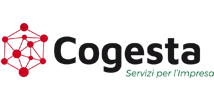Content
Perform the work in an environment containing a copy of the production org’s metadata, but with no production data. Develop on Lightning Platform using an appropriate combination of declarative tools and programmatic tools . On the Salesforce Developers website, Calvin learns that ALM defines the process of managing an app’s development, from design to final release. ALM also establishes a framework for making app bug fixes and feature enhancements over time.
For businesses trying to get the most out of their application investments, ALM is crucial. For optimal effectiveness, ALM assists organizations in designing and implementing applications in a simplified and effective manner. Agile strongly emphasizes iterative and incremental development methods, which are best suited for projects with high degrees of complexity or unpredictability. The waterfall best suits projects with clearly https://globalcloudteam.com/ defined goals and procedures because it uses a linear approach to accomplish all ALM stages. Applications, services, and procedures are transferred from development to the target audience in a way that satisfies project objectives during the deployment stage of Application Lifecycle Management . Code development is the focus of the development stage, which includes several tasks like designing, coding, verifying, and testing.
application lifecycle management (ALM)
This allows the team to find and address any remaining issues, and provide updates and improvements. Today, the term Agile usually refers to the techniques applied in software development, like Scrum, that focuses on frequent software delivery. Scrum also includes several iterations or sprints, enabling early feedback from the end-users. As a result, companies are able to stay on top of their competition in a constantly changing business world. Governance describes the processes and activities used by the organization to exercise decision-making control over applications that are being developed.
- Designing related to the app and then discussing design is also considered in the application development phase.
- Application Lifecycle Management is the monitoring of an application over its entire life cycle.
- Application lifecycle management provides a framework for software development while also helping you to manage your software over time.
- After the tests are completed and the necessary bugs are fixed, the application can be deployed to users.
- ALM improves communication between every other department of development with the development team.
- It’s a never-ending procedure that will last the whole of a project’s life cycle.
If errors are found during this process, a feedback process takes place. The errors are documented and mirrored back to the implementation team. Rework and inspection phase alternate until no more errors are found in the application. Explain why the use of the application lifecycle management process helps teams develop apps faster.
release per month. Don’t miss out.
Low-quality software may generate users to give unfavorable reviews, leading to poor marketing, losing other customers, a long-term decline in sales and revenue, and occasionally expensive legal action. It’s also important to note that, in this stage, the team can follow a software development methodology that will help carry the whole process on smoothly. This methodology used to be drawn upon what is a alm linear sequential models, like the Waterfall model. Today, we prefer iterative models, such as Agile frameworks and the Lean methodology, as well as DevOps automation — which we’ll discuss later. ALM covers additional aspects of application management outside of software development, especially the usage, maintenance, and servicing of the application after it has already been developed.
That is, the term refers to the entire process from the moment the idea for the application is conceived until the moment it’s retired from use. CI/CD introduces ongoing automation and continuous monitoring throughout the lifecycle of apps, from integration and testing phases to delivery and deployment. You may find all of the features you need in 1 tool, or you may need to integrate with additional tools—developer-specific tools, for example. The ALM tool you choose should also support your development process, whether it’s agile, waterfall, DevOps, or something else.
Smooth-running app development process
Depending on the needs of your application, you’ll have different tools at your disposal. During the testing phase, testers must ensure that the application meets the requirements established during the first stages of the process. ALM covers the entire life of an application, from the initial idea until the end of life. In an agile development model, there will probably not be a final handoff to the operations team for deployment and maintenance. Instead, following DevOps principles, the developers will remain involved after deployment and make any changes needed. Any delays during just one of the phases in the lifecycle can create delays in the entire process.

SAP customers get free access to Tricentis Test Automation for SAP as part of their SAP Enterprise Support engagement. Both ALM platforms SAP Solution Manager and SAP Cloud ALM will allow the integration of Tricentis Test Automation for SAP. This will accelerate the move to SAP S/4HANA and the Intelligent Enterprise Suite significantly for our customers. The benefit of this communication is reflected by time-to-time issue detection and fixing the same with a quick solution.
Continuous Integration and delivery
However, with complex application development — especially in regulated industries — it’s advisable to find an application lifecycle management tool. The investments needed to develop innovative software products motivate companies to industrialize application development, making sure to meet the market needs. ALM is a beneficial approach that saves time and money by helping avoid costly mistakes and scope creep. The initial governance stage, with its vital business planning and resourcing, helps align the app to business outcomes.

This eliminates integration problems by allowing developers to consolidate their work without creating any drawbacks. We work seamlessly with any team no matter what real-world constraints exist on the ground. See how Jama Connect can improve your ALM process by downloadingthe solution overview. We help you plan strategies, and we commit to make your maintenance journey a headache-free one.
Deploying the Application
Ultimately, this is when the ALM ends — with the end of the application’s lifecycle. However, the process does not end here; for the application to remain healthy and robust, we need to monitor and maintain it often. Finally, when the application no longer has value for the customers, it reaches its end of life.

